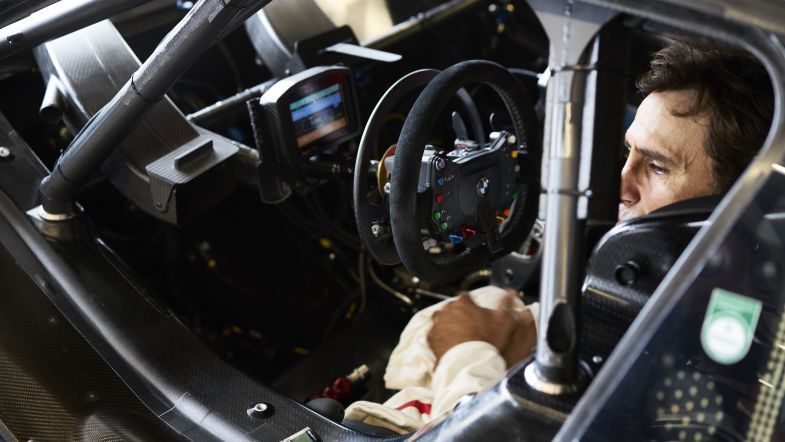Alex Zanardi samples hand control BMW ahead of DTM debut
Alex Zanardi has completed the first roll out of the specially adapted car that he will use for his outing in the DTM at the end of August.
The Italian will join BMW’s line-up for the event at Misano in what will be his debut in the series, having raced for the German manufacturer in both the World Touring Car Championship and sportscars.
The initial run at Dingolfing provided Zanardi with the opportunity to try the new modifications that have been developed by BMW M Motorsport engineers that will allow the former F1 racer to contest the DTM meeting without using his prosthetic legs.
Instead, the 51-year-old will race using hand controls on his M4 DTM and said the new system was one that would provide him with additional comfort behind the wheel.
“The way the prosthetic sockets works, they stay in place thanks to a kind of vacuum effect and this of course does not allow any transpiration,” he said. “But the limbs are the cooler of our body. We lose temperature with blood circulation through our extremities – so when I wear my prosthetic legs I am like an engine without cooling system. And this doesn’t help while you stay in the cockpit of a race car where the temperature often rises above a decent limit.
“When we started to study the Daytona 2019 project I told the engineers that this was the main change we should had look at. And when I was offered to drive DTM in Misano, we had already done sufficient work and progress to believe that for me to drive without my prosthetic legs would potentially also help the performance.
“The advantage I get driving this way, physically speaking, gets bigger with every lap. You cannot imagine the difference! I’m therefore sure it’s this will also be a better option for the two one hour races in Misano with the BMW M4 DTM.”
Zanardi added that competing without using his prosthetics wouldn’t cause any issues when it comes to getting in or out of the car – particularly in the event of an incident.
“It does not look super nice to see somebody walking away somehow like this, but in reality it would be easier for me to move away from the car – especially in gravel – out of my arms with no legs than it would be with my legs,” he said. “I already made this experience: I was able to somehow walk on the gravel with my prosthetic legs and no canes but it wasn’t easy. And the chance that I maybe put a foot in a wrong way and fall is greater. This would not represent any practical danger, I have a long experience of ‘falling’, but of course this would slow down my process of running away from the car.
“So overall it is a better option also from this point of view. This does not mean that if ever I decided to drive with my prosthetic legs again it would be unsafe. Of course we took all aspects in serious consideration because we did not want to bump any safety issue, not just for myself, or BMW, or more for other people, simply because is what you have to do when you do things at this level. And we wouldn’t start this new adventure if we didn’t think we have it covered under this point of view.”










